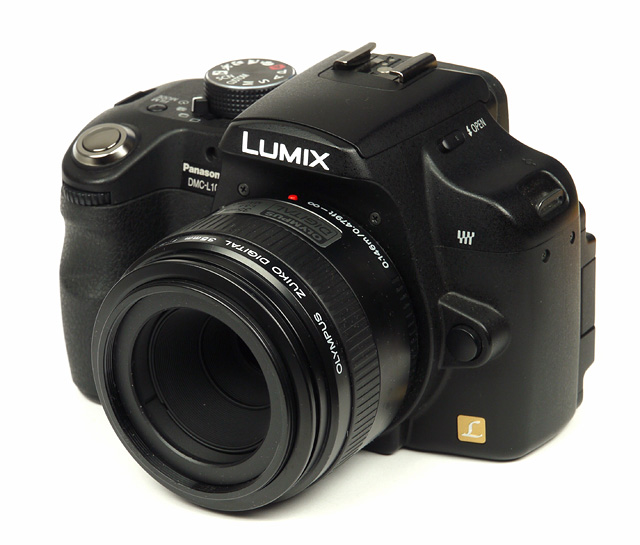|
Olympus Digital Zuiko 35mm f/3.5 macro - Review / Lens Test Report |
|
Lens Reviews -
(Micro-)Four-Thirds
|
|
Page 1 of 3

Review by Klaus Schroiff, published December 2009
Special thanks to Adrian Ahlhaus for providing this lens for testing purposes!
Introduction
The Olympus Zuiko Digital 35mm f/3.5 macro is one of the most affordable macro lenses around and we aren't talking about a third party lens here but about a product from a genuine manufacturer. The reason for the rather low price point is, of course, the comparatively slow speed of the lens. A max. aperture of f/3.5 is typically more associated with conventional standard zoom lenses rather than primes. You may debate whether this is a viable compromise - a comparatively slow max. aperture isn't really anything to worry about in a macro lens but this lens isn't really all that useful e.g. for portrait photography. When thinking in full format terms (field-of-view & depth-of-field) the lens is equivalent to a 70mm f/7 which may give you a better idea if the scope of the lens (technically it remains a 35mm f/3.5 lens of course). It's interesting to note that the Zuiko provides a max. magnification of 1:1 - this is actually "better" than the 1:2 magnification of the primary 4/3 macro lens - the much more expensive Olympus Zuiko Digital 50mm f/2 macro.
 The Zuiko 35mm f/3.5 is a member of the "standard" (=consumer) lineup within the Olympus system. The build quality is actually pretty good but you shouldn't expect the rock-solid construction typical for the Olympus "pro" or even "super pro" series. The lens body is made of plastic based on a metal mount. The inner lens tube extends when focusing towards closer distances. The slow max. aperture of the lens has an interesting side effect - the lens elements are really, really tiny which may be somewhat surprising upon first contact. The front element (~15mm diameter!) is deeply recessed which is not unusual for a macro lens. A lens hood is not provided nor really needed.
The Zuiko 35mm f/3.5 is a member of the "standard" (=consumer) lineup within the Olympus system. The build quality is actually pretty good but you shouldn't expect the rock-solid construction typical for the Olympus "pro" or even "super pro" series. The lens body is made of plastic based on a metal mount. The inner lens tube extends when focusing towards closer distances. The slow max. aperture of the lens has an interesting side effect - the lens elements are really, really tiny which may be somewhat surprising upon first contact. The front element (~15mm diameter!) is deeply recessed which is not unusual for a macro lens. A lens hood is not provided nor really needed.
 The AF uses a conventional micro motor. Its speed it pretty good when staying within conventional focus distances but if the AF decides to hunt throughout the focus range it can take a while. Unfortunately Olympus did NOT implement a focus limiter nor a focus distance indicator - this is surely a cost cutting measurement but it's a bit unfortunate for a macro lens nonetheless. Manual focusing works "by wire" so there's no direct mechanical coupling. Normally you can consider this to be a non-issue but the implemented variant in this lens reacts a bit "coarse" (visible focus steps) at shorter focus distances.
The AF uses a conventional micro motor. Its speed it pretty good when staying within conventional focus distances but if the AF decides to hunt throughout the focus range it can take a while. Unfortunately Olympus did NOT implement a focus limiter nor a focus distance indicator - this is surely a cost cutting measurement but it's a bit unfortunate for a macro lens nonetheless. Manual focusing works "by wire" so there's no direct mechanical coupling. Normally you can consider this to be a non-issue but the implemented variant in this lens reacts a bit "coarse" (visible focus steps) at shorter focus distances.
| Specifications |
|---|
| Equiv. focal length | 70 mm (full format equivalent) |
| Equiv. aperture | f/7 (full format equivalent, in terms of depth-of-field) |
| Optical construction | 6 elements in 6 groups |
| Number of aperture blades | 7 (circular) |
| min. focus distance | 0.146 m (max. magnification ratio 1:1) |
| Dimensions | 53 x 71 mm |
| Weight | 165 g |
| Filter size | 52 mm (non-rotating) |
| Hood | - |
| Other features | - |
|